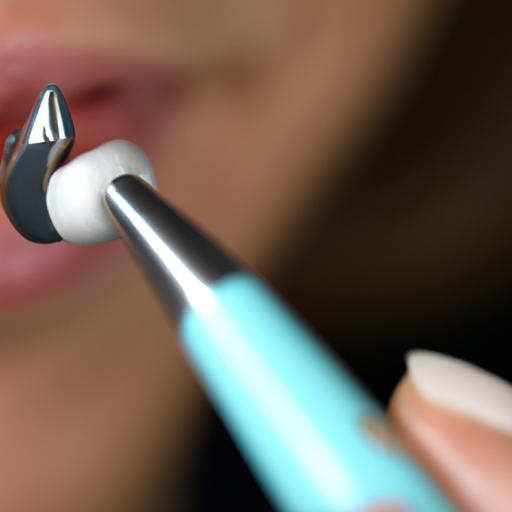Learn about the importance of the removal of dental plaque and calculus procedure for optimal oral hygiene. Prevent dental issues and maintain a healthy smile.
Introduction
In our quest for a healthy lifestyle, we often overlook the importance of maintaining good oral hygiene. However, the truth is, oral health plays a vital role in our overall well-being. One crucial aspect of oral hygiene is the removal of dental plaque and calculus, which can lead to various dental issues if left unaddressed. In this article, we will delve into the procedure for removing dental plaque and calculus, its significance, and the benefits it offers.

Formation of Dental Plaque and Calculus
Understanding Dental Plaque and Calculus Formation
What is Dental Plaque?
Dental plaque is a sticky, colorless film that forms on the teeth and gumline. It is composed of bacteria, food particles, and saliva, which combine to create a breeding ground for harmful microorganisms. If not properly removed, dental plaque can lead to tooth decay, gum disease, and bad breath.
Factors Contributing to Plaque Formation
Plaque formation is influenced by several factors, including poor oral hygiene practices, inadequate brushing and flossing techniques, irregular dental visits, and consuming sugary and acidic foods. These factors create an environment where bacteria thrive, leading to the accumulation of plaque.
Transformation of Plaque into Calculus
When plaque is not effectively removed, it can harden and turn into calculus, also known as tartar. Calculus is a mineralized form of plaque that firmly adheres to the teeth, making it extremely difficult to remove through regular brushing and flossing. If left untreated, calculus can cause gum inflammation, gum recession, and even tooth loss.

Professional Removal of Dental Plaque and Calculus
The Procedure for Removing Dental Plaque and Calculus
To combat the harmful effects of plaque and calculus, dental professionals employ a specialized procedure for their removal. Let’s take a closer look at the step-by-step process involved:
Step 1: Assessment and Examination
Before initiating the removal procedure, a thorough assessment and examination of the patient’s oral health are conducted. This helps the dental professional identify the extent of plaque and calculus buildup, as well as any signs of gum disease or other oral health issues.
Step 2: Scaling
The first stage of the removal procedure is scaling, which involves the careful removal of plaque and calculus from the tooth surfaces. Dental professionals use specialized tools such as scalers to scrape away the buildup, paying close attention to the gumline and hard-to-reach areas between the teeth.
Step 3: Ultrasonic Scaling
In cases where significant calculus buildup is present, dental professionals may utilize an ultrasonic scaler. This device uses high-frequency vibrations and water to break down and remove stubborn calculus from the teeth. Ultrasonic scaling is highly effective and minimizes discomfort for the patient.
Step 4: Polishing
After scaling, the teeth are polished using a gentle yet abrasive polishing paste. This process helps smoothen the tooth surfaces, making it more difficult for plaque to adhere in the future. Polishing also enhances the overall aesthetics of the teeth, leaving them clean and shiny.
Step 5: Oral Hygiene Instructions
To maintain the results of the removal procedure, dental professionals provide patients with personalized oral hygiene instructions. These instructions include proper brushing and flossing techniques, the use of interdental brushes or water flossers, and the importance of regular dental visits for preventive care.

Achieving Oral Health Through Regular Plaque and Calculus Removal
Benefits and Importance of Regular Removal of Dental Plaque and Calculus
Prevention of Oral Health Issues
Regular removal of dental plaque and calculus plays a crucial role in preventing various oral health issues. By eliminating the buildup, the risk of developing cavities, gum disease, and bad breath is significantly reduced. Moreover, it helps maintain fresher breath and a healthier mouth overall.
Enhancing Overall Oral Hygiene and Aesthetics
A plaque and calculus-free mouth not only contributes to oral health but also enhances the overall aesthetics of one’s smile. Teeth free from yellowish stains and discoloration appear brighter and healthier, boosting self-confidence and leaving a positive impression on others.
Promoting Long-Term Dental Health and Well-being
By undergoing regular removal procedures, individuals are taking proactive steps towards ensuring their long-term dental health and well-being. Preventing the progression of gum disease and tooth decay helps preserve natural teeth, eliminating the need for extensive dental treatments in the future.
In conclusion, the removal of dental plaque and calculus is a crucial procedure in maintaining optimal oral hygiene. By understanding the formation of plaque and calculus, as well as the steps involved in their removal, individuals can take charge of their oral health and prevent dental issues. Regular visits to dental professionals for scaling, ultrasonic scaling, and polishing, coupled with proper oral hygiene practices, can pave the way to a healthy and beautiful smile. So, why wait? Take the necessary steps today to ensure a plaque-free and healthy mouth!
To explore more tips and guidance on maintaining excellent oral hygiene, check out this comprehensive guide on the best practices and tools for oral health maintenance.
Remember, your oral health matters, and taking care of it will undoubtedly contribute to your overall well-being.







